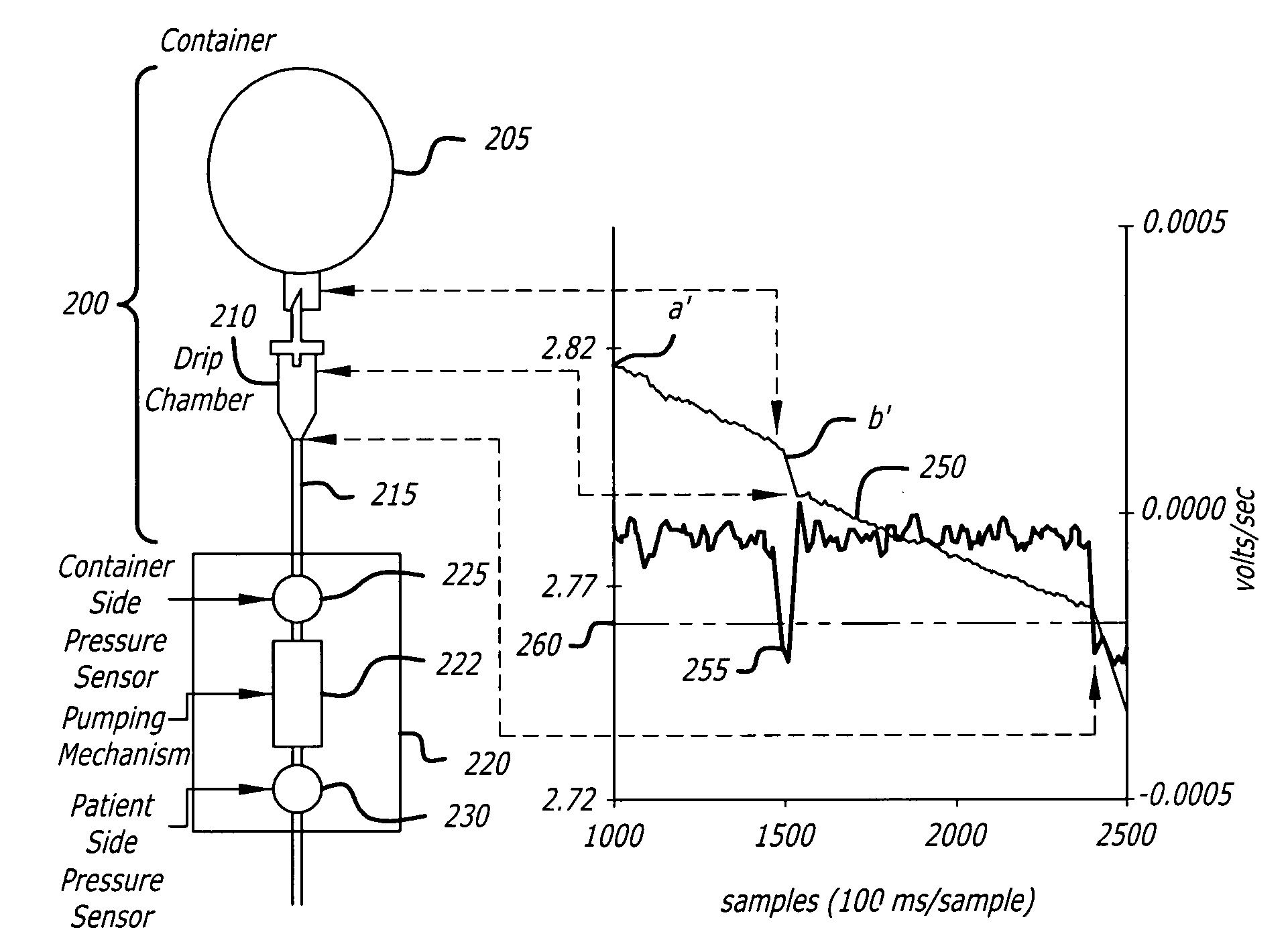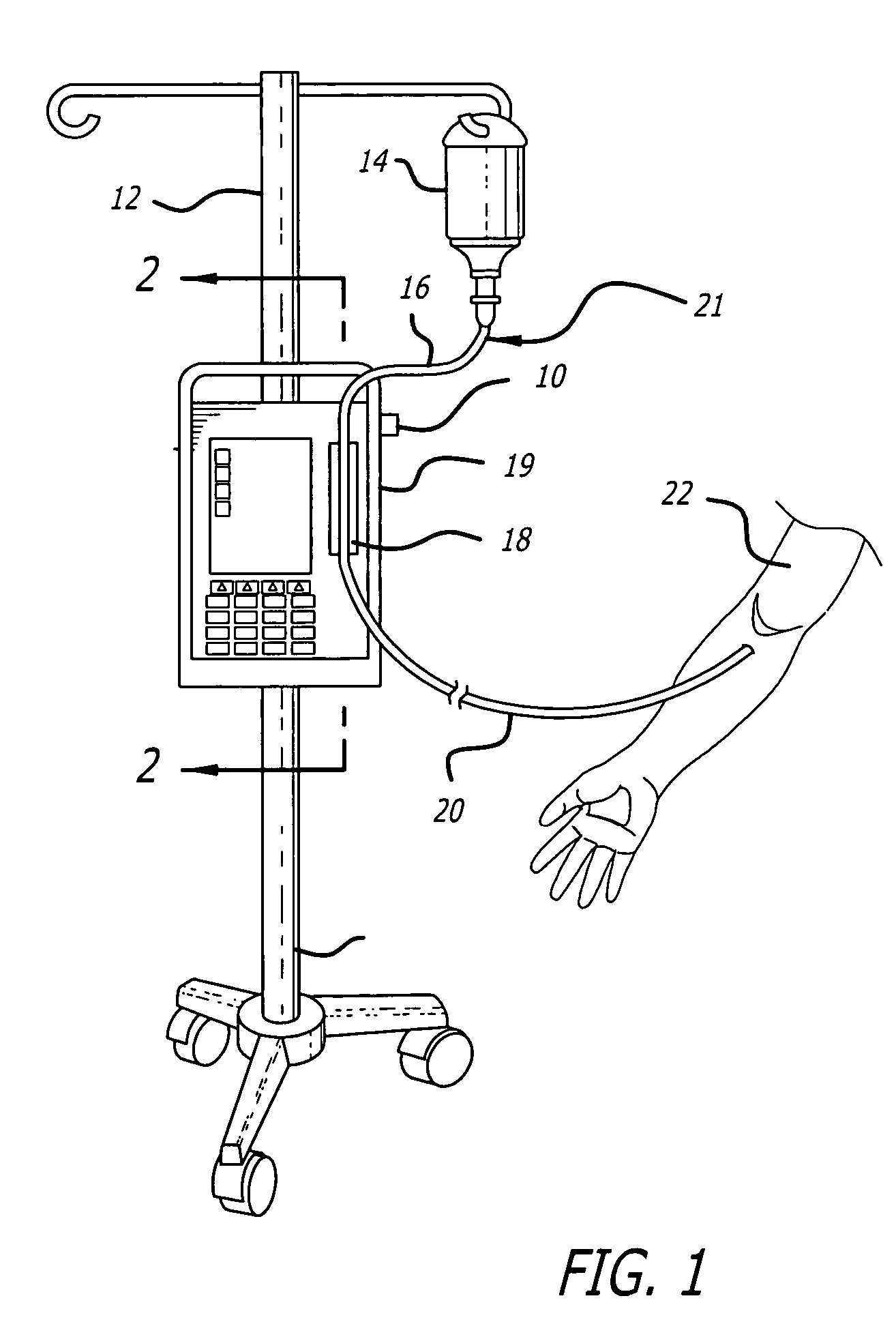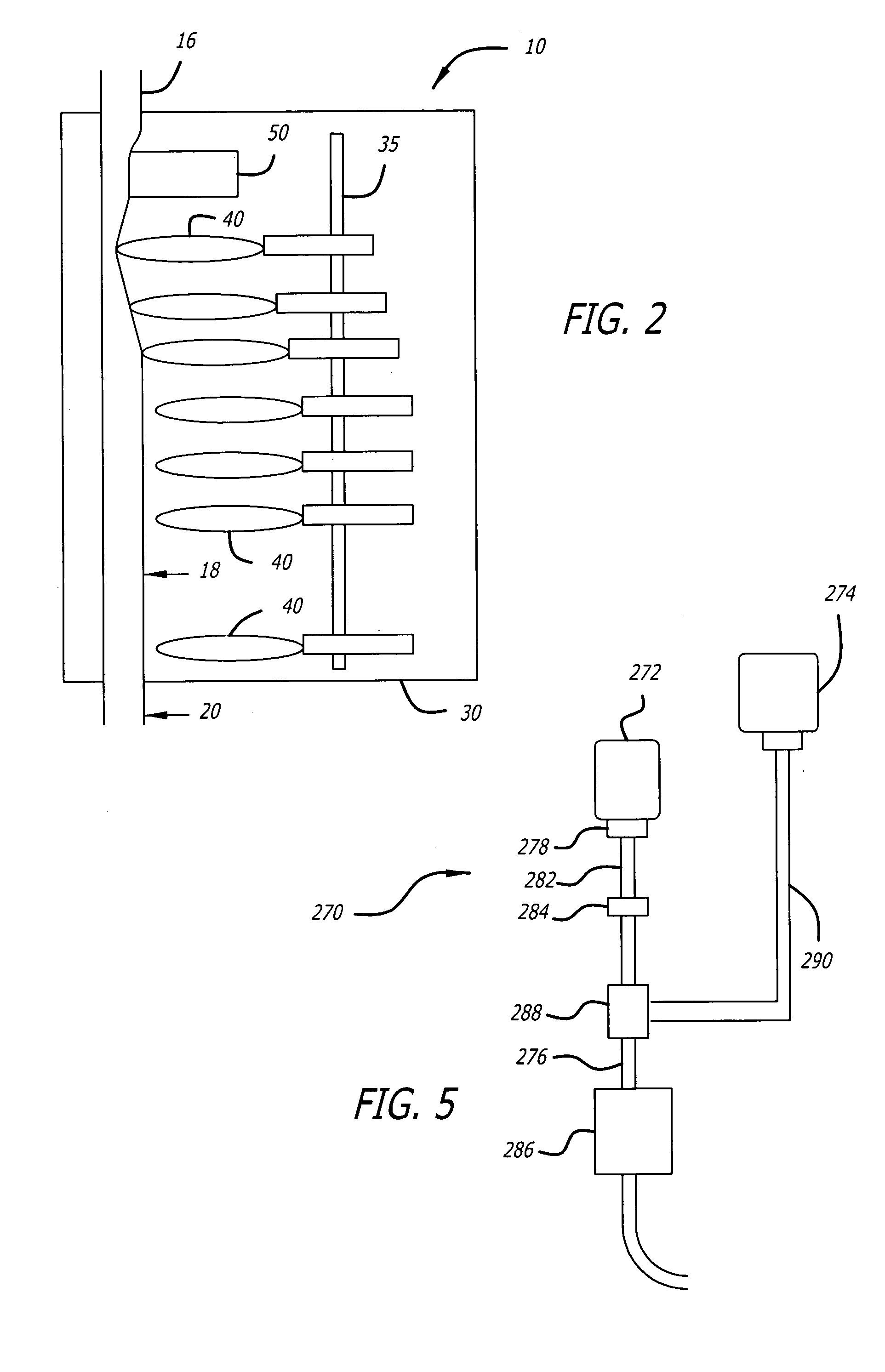Empty container detection using container side pressure sensing
a technology of container side pressure and detection container, which is applied in the direction of digital computer details, process and machine control, instruments, etc., can solve the problems of difficult monitoring and determining when the fluid container becomes empty, air entering, and method is prone to errors
- Summary
- Abstract
- Description
- Claims
- Application Information
AI Technical Summary
Benefits of technology
Problems solved by technology
Method used
Image
Examples
Embodiment Construction
[0025]Referring now to FIG. 1, there is shown an infusion pump set-up, generally designated 10, shown in use in its intended environment. In particular, the infusion pump set-up 10 is shown mounted to an intravenous (I.V.) pole 12 on which a fluid source 14 containing an I.V. fluid is held. The fluid source 14 is connected in fluid communication with an upstream fluid line 16. The upstream fluid line 16 is a conventional I.V. infusion-type tube typically used in a hospital or medical environment, and is made of any type of flexible tubing appropriate for use to infuse therapeutic fluids into a patient, such as polyvinylchloride (PVC). The upstream fluid line 16 is connected with another tube portion 18 that is flexible and is mounted in operative engagement with a peristaltic pumping apparatus 19, for propelling fluid through a downstream fluid line 20, for example, to a patient's arm 22. It will be understood by those skilled in the art that the upstream fluid line 16, the flexible...
PUM
 Login to View More
Login to View More Abstract
Description
Claims
Application Information
 Login to View More
Login to View More - R&D
- Intellectual Property
- Life Sciences
- Materials
- Tech Scout
- Unparalleled Data Quality
- Higher Quality Content
- 60% Fewer Hallucinations
Browse by: Latest US Patents, China's latest patents, Technical Efficacy Thesaurus, Application Domain, Technology Topic, Popular Technical Reports.
© 2025 PatSnap. All rights reserved.Legal|Privacy policy|Modern Slavery Act Transparency Statement|Sitemap|About US| Contact US: help@patsnap.com



